 Film still from the Kenyan sci-fi short Pumzi (2009)
Film still from the Kenyan sci-fi short Pumzi (2009)
Seemingly Without End:
Our Frictionless Future
Mailee Hung
If you ask a technologist or an app developer a product’s key measure of success, you’d likely hear one term: “friction.”
Friction is how much effort a user has to put in to get the product’s desired effect, whether that’s buying something on the internet, finding out specific information, or playing a game. A high-friction experience is likely to result in stress, frustration, and, ultimately, abandonment. If entering your payment info is too hard, you might leave your digital shopping cart and tab over to a different site. If calling a car through Uber is taking too long, you might switch to Lyft. If you can’t settle an argument through Google, maybe you’ll consult a book, or, more likely, give up.
An ideal user experience is frictionless. The distance between wanting a thing and having it is negligible. You barely notice wanting to buy something, and in one or two clicks Amazon can have it on your doorstep in one or two days. You experience small hits of pleasure scrolling through Instagram and the app happily obliges this pleasure-seeking by making scrolling an effectively endless possibility.
There is a reason this idea is presented tactilely. The essential failure of screen technology is not the mere primacy of the visual field but the total sublimation of the physical world. We are essentially unfit for the bodilessness of the digital. Unfortunately for some, humans remain “meatspace” creatures, and the virtual approximations of complete user experiences are still merely approximations, even with clever haptics or tactile feedback. So our terms about the digital evoke tactility so that we might understand it literally, viscerally, even if the digital cannot fully encapsulate our experiences but must try to describe them. The question seems to be if we will try to be more like the machines that make (and unmake) or futures, but this is moot—technology and futurity can safely be collapsed into a single subject.
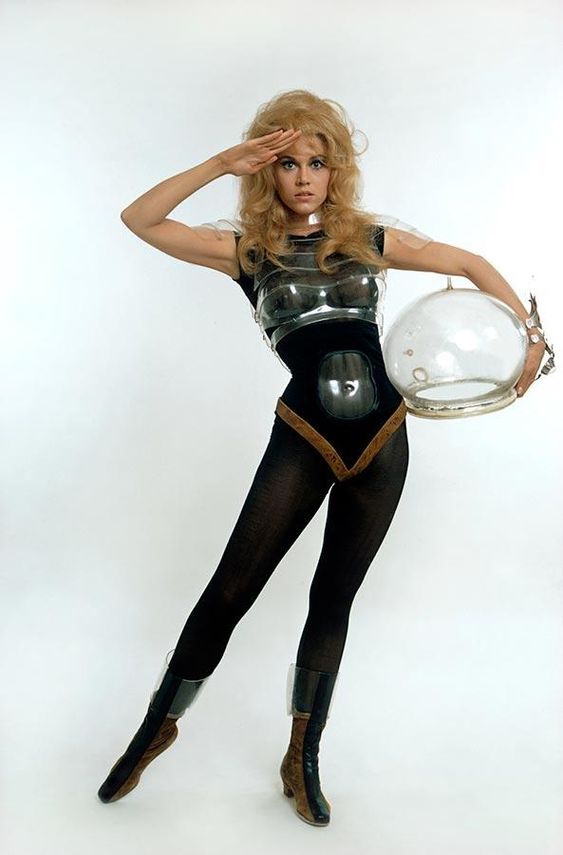 Barbarella (1968)
Barbarella (1968)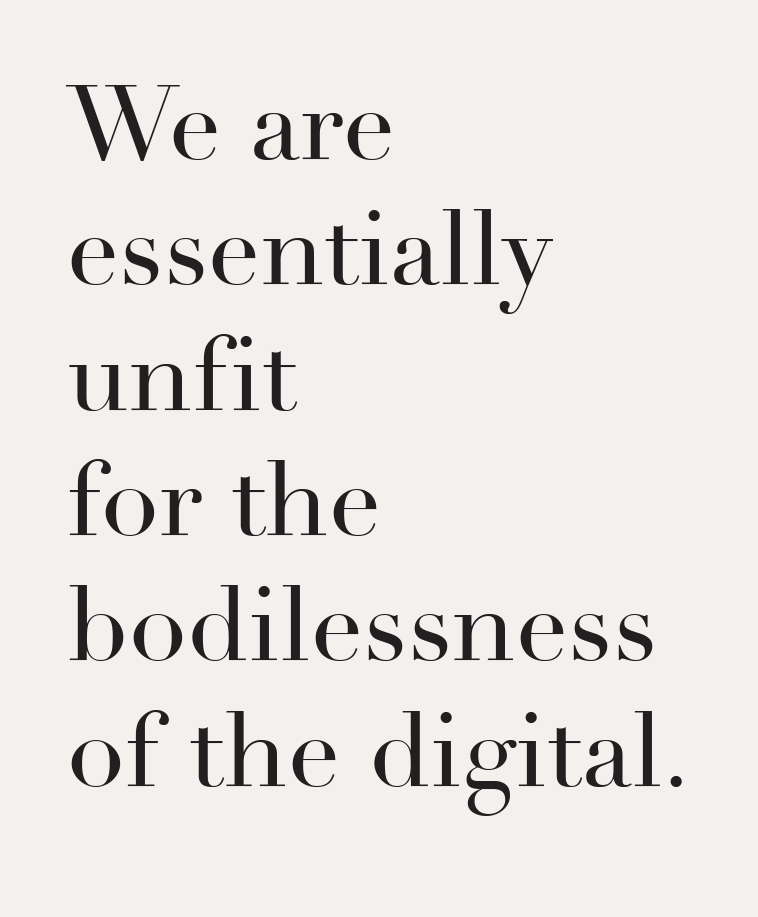
In Homo Deus, Yuval Noah Harrari traces the inseparability between technology and humanity’s ability to imagine the future in the way we do now—as a space for difference. For centuries a person could expect tomorrow to look the same as today. It was not until the twin engines of scientific revolution and capital creation began spinning up together that humans started believing that looking forward could mean looking into a new, different, even better world. “The” future is so fully imbricated within technology that to break this bond would be to break the very idea.
In many ways, imagining utopia is imagining this break—to get a point in the technological process where humans collectively decide “enough,” and work instead to maintain equilibrium.
In many ways, imagining utopia is imagining this break—to get a point in the technological process where humans collectively decide “enough,” and work instead to maintain equilibrium.
To imagine both “enough” and “utopia” together is to imagine infinitude, ease, and drawing down the distance between wanting and having: Frictionlessness.
![]() The low-tech and utopian Mül aliens, still from Valerian and the City of a Thousand Planets (2017)
The low-tech and utopian Mül aliens, still from Valerian and the City of a Thousand Planets (2017)
Science fiction is rightfully uneasy with the idea of utopia; lack of friction makes it difficult to drive a plot. Rather than a direct depiction, utopia is a state to which diegetic science fictional worlds still aspire, either through a rejection of technology or a more fluid joining with it. More commonly, sci-fi treats utopia as a kind of paradise lost to progress. In sci-fi films like Avatar, Valerian and the City of a Thousand Planets, and even Star Wars, the most harmonious worlds have eschewed the machinic and returned to nature, presuming an innate wisdom in the non-synthetic. The textiles are organic, primitive or handmade. (Though similarly low- or no-tech, this is distinct from dystopia, which is the failure of technology to create these harmonies by design; instead survival must be cobbled together with the scraps of the fallen society’s false technological promises.) These neo-primitivist, often literally alien utopias imagine frictionlessness as an a priori state, uncorrupted by non-natural, technologically enhanced desires.
![]() Queen Amidala in her parade gown on the peaceful planet Naboo in Star Wars Episode I: The Phantom Menace (2011)
Queen Amidala in her parade gown on the peaceful planet Naboo in Star Wars Episode I: The Phantom Menace (2011)

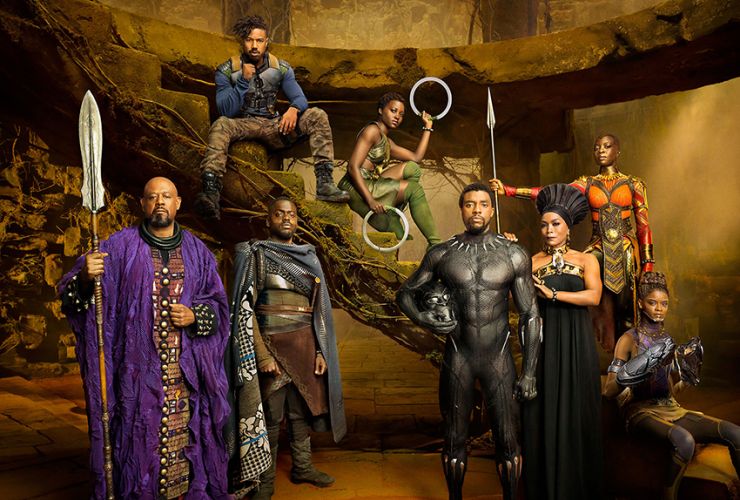
The lead cast of Black Panther (2018) in full costume
Even sci-fi movies which imagine technologically-enhanced utopian states suggest that they are not achieved by technology alone. In the Afrofuturist triumph Black Panther, the city of Wakanda’s technological success is owed to its connection to the earth and tribal histories, suggesting a homeostasis available only to societies that cleave to the earliest human attachments.We can hardly conceive of a technological utopia separate from our terrestrial origins.
Other sci-fi shows or movies that paint a rosier picture of technological advancement, like Star Trek, instead, show successful utopian states through utilitarianism, both politically and sartorially. The uniforms worn by Star Trek characters are sleek, one-piece jumpsuits, differentiated only by color based on the wearer’s function. They suggest a political seamlessness, one recognizable in both communist and fascist ideals in which the state subsumes the individual. There is no friction between needs and provision, and there is no difference (or at least, no difference that matters) between the individual’s desires and the state’s desires.
![]()
![]()


Top: The lead cast of Star Trek: The Next Generation (1984–1994) Bottom: Promo poster for Star Trek: Short Treks (2018–)
Of course, if there is anything that technology has taught us so far, it’s that there are as many ways to imagine utopia as there are ways to get to it. Neoprimitivism is a fantasy, and both communism and fascism have proven their inability to reckon with technological change and our commensurate new desires. Perhaps the most radical utopian styling of the future is one that proposes something beyond human—technologies so fully imbricated with our bodies that a discrete self is hardly comprehensible, in a styling more aptly described as posthuman.

Look form Iris van Herpen’s Fall 2018 runway show “Syntopia,”
exploring synthetic biolog
There are, understandably, few sci-fi films that grapple effectively with posthumanism, but there are real-world visual stylings of the futuristic that gesture towards this aspiration. Fashion designer Iris van Herpen takes science, technology, and the edges of consciousness for her inspiration, often working with materials derived via highly technical production processes that can create forms that more pedestrian textiles could never hold. From PVC involutions to 3D-printed exoskeletons, her work may not necessarily posit utopia but it does hold a new material logic that could carry us there. The structure of the object is also its own skin.
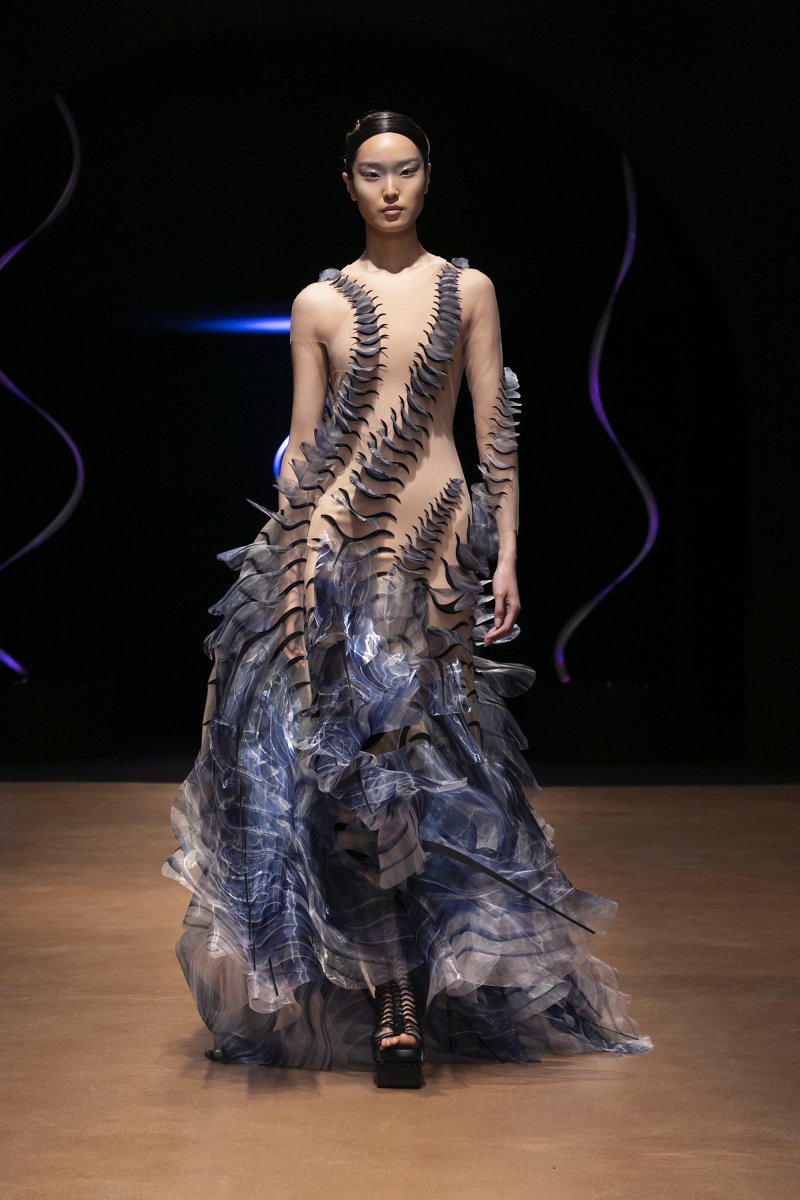

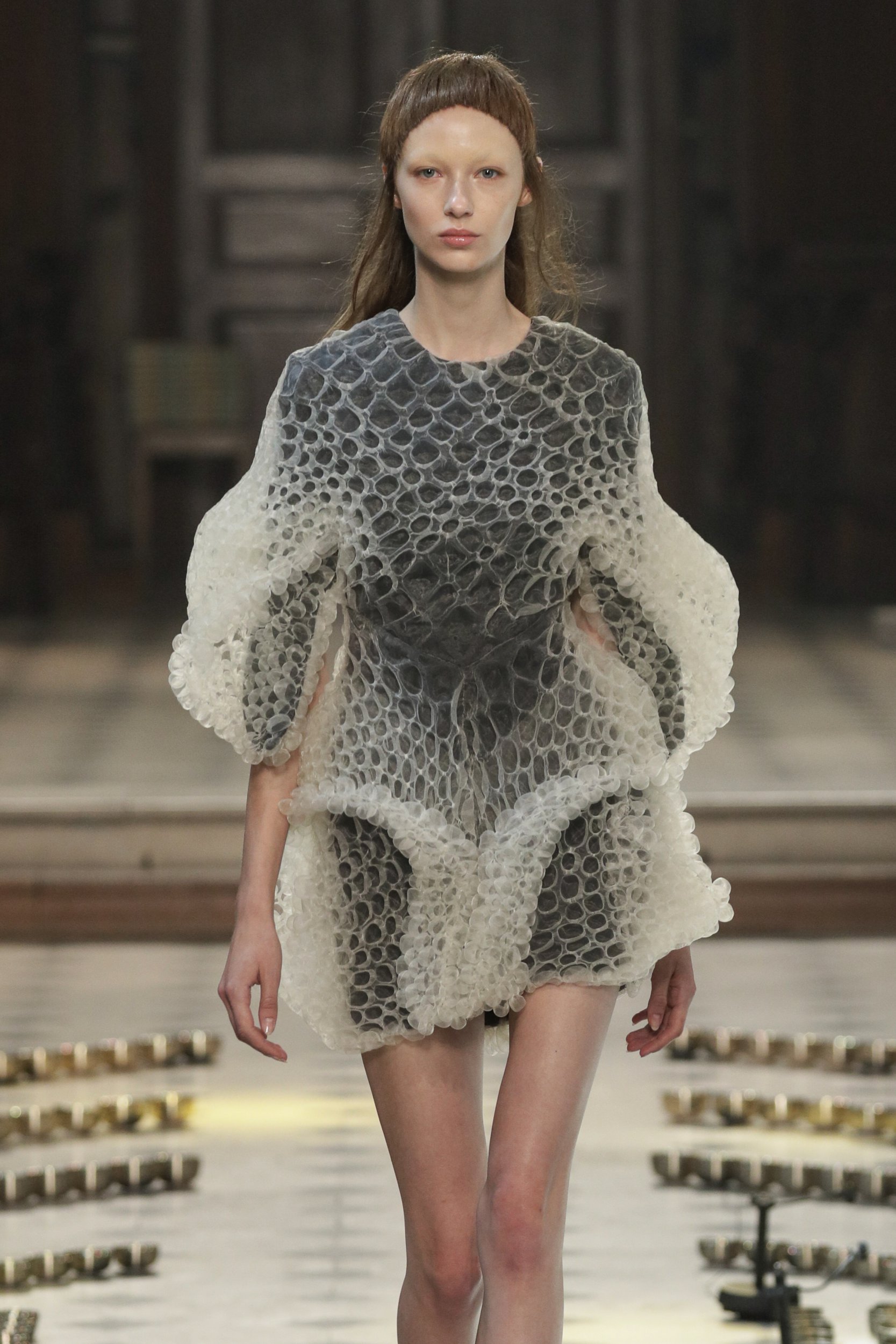

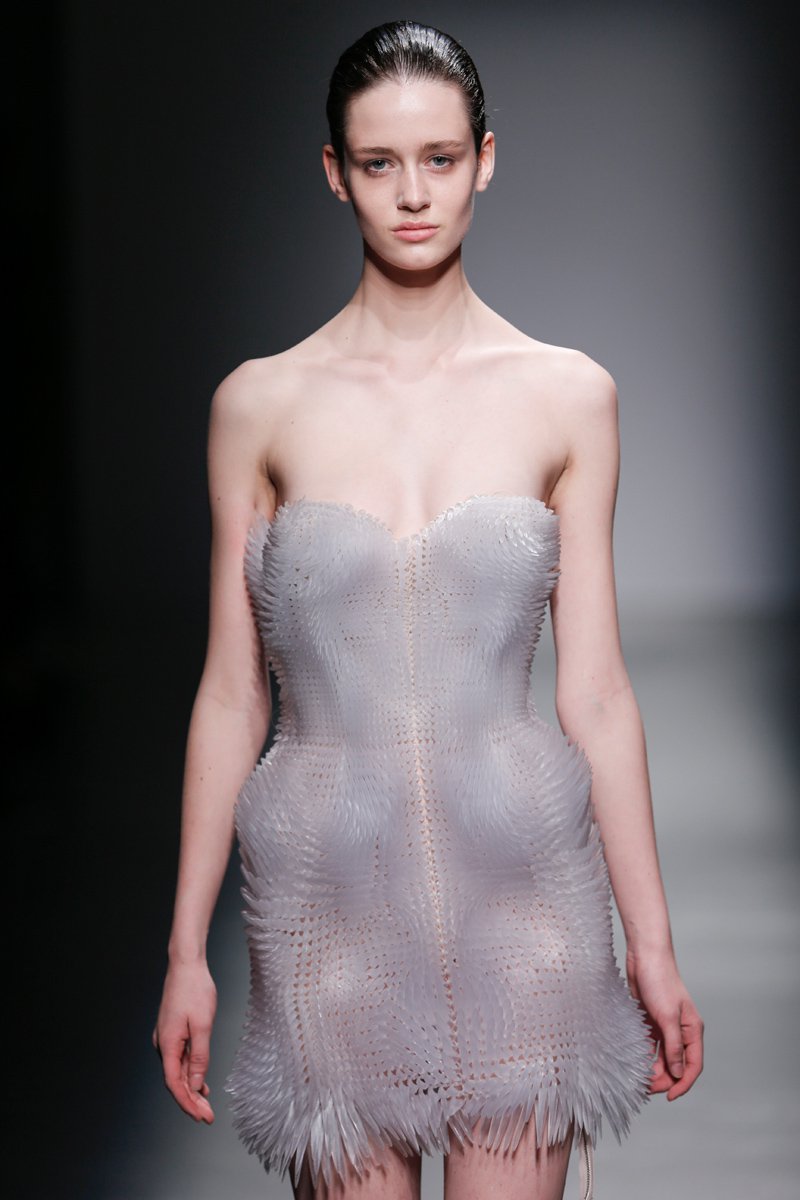

Top from left:1. A 3D printed look from Iris van Herpen’s Fall 2015 “Terraform” collection
2. Iris van Herpen look from “Seijaku,” Fall 2016
3. Gown from Iris van Herpen’s Spring 2020 collection, “Sensory Seas.” Van Herpen drew her inspiration from neuroanatomy, human anatomy, and marine ecologies
Bottom from left:
1. Look from Iris van Herpen’s Fall 2012 runway show, “Hybrid Holism,” the title of which was, “derived from the term ‘hylozoism,’ which refers to the belief that all matter around us is alive.”
2. Look from Iris van Herpen’s Fall 2014 runway show, “Biopiracy,” which was designed around the question, “Are we still the proprietors of our own bodies?”3. Detail from a look from Iris van Herpen’s Fall 2016 runway collection, “Seijaku,” exploring the study of cymatics.
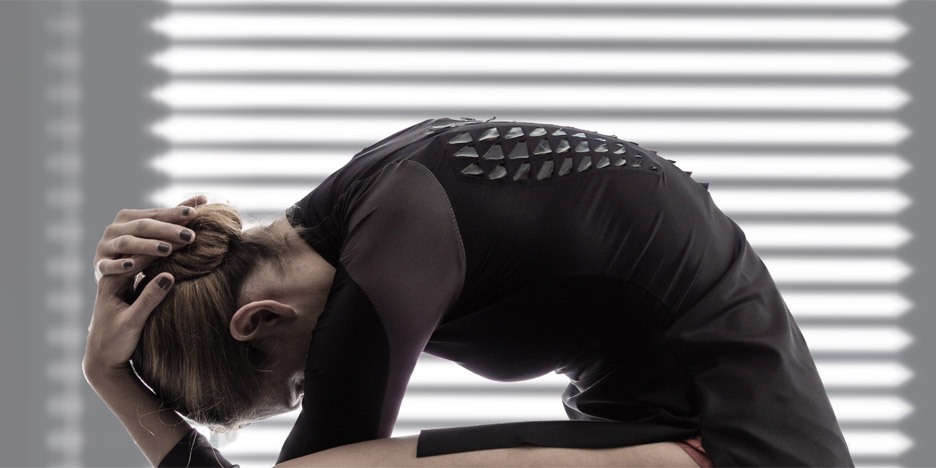
MIT Media Lab’s BioLogic fabric on a dance
This vision of utopia, whether literal or political, however, quickly veers into the uncanny for us. Van Herpen’s most outlandish imaginings are as uncomfortable as they are beautiful. Even as we reward increasingly frictionless technologies and move closer to a complete aesthetic erasure of any perceived boundaries between the self and our objects, we resist the existential idea of merging. There is a reason that dystopia appears more realistic to our eyes, not the least being that we are living out a diversity of (purportedly) science fictional hellscapes, depending on your geographic location and socioeconomic status, but also because dystopia recognizes that our external environment is a threat to our bodies. This is a truth that utopian, or even merely progressive visions for technology hope to obviate. Dystopian styling seeks to protect us from the threats that define it: drought, pollution, surveillance.
This vision of utopia, whether literal or political, however, quickly veers into the uncanny for us. Van Herpen’s most outlandish imaginings are as uncomfortable as they are beautiful. Even as we reward increasingly frictionless technologies and move closer to a complete aesthetic erasure of any perceived boundaries between the self and our objects, we resist the existential idea of merging. There is a reason that dystopia appears more realistic to our eyes, not the least being that we are living out a diversity of (purportedly) science fictional hellscapes, depending on your geographic location and socioeconomic status, but also because dystopia recognizes that our external environment is a threat to our bodies. This is a truth that utopian, or even merely progressive visions for technology hope to obviate. Dystopian styling seeks to protect us from the threats that define it: drought, pollution, surveillance.


Dystopia is as preoccupied with technology as utopia, but it doesn’t presume ease of use.
Dune’s stillsuits allow their fictional wearers to live on the desert planet Arrakis by harvesting all of the fluids their fleshy bodies produce and recycling them into potable water. These padded, armor-like suits are described as being extremely uncomfortable and invasive, but also absolutely necessary in order to survive. Mad Max and other post-apocalyptic films imagine their survivors scavenging the rubble of fallen industrial societies, repurposing scraps into armor, goggles, and weapons. Even modern day versions of this presume the necessity for protection. Urban “techwear” develops clothing patterns to obfuscate the wearer from surveillance technologies, or sews in truly baffling pocket designs in the name of “functionality” and providing easy access to imagined needs. Design duo Nieuwe Heren recognized the danger of modern day urban pollution, and their aptly-named Aegis parka senses hazardous particulate in the air around the wearer and allows them to breathe through a built-in respirator.
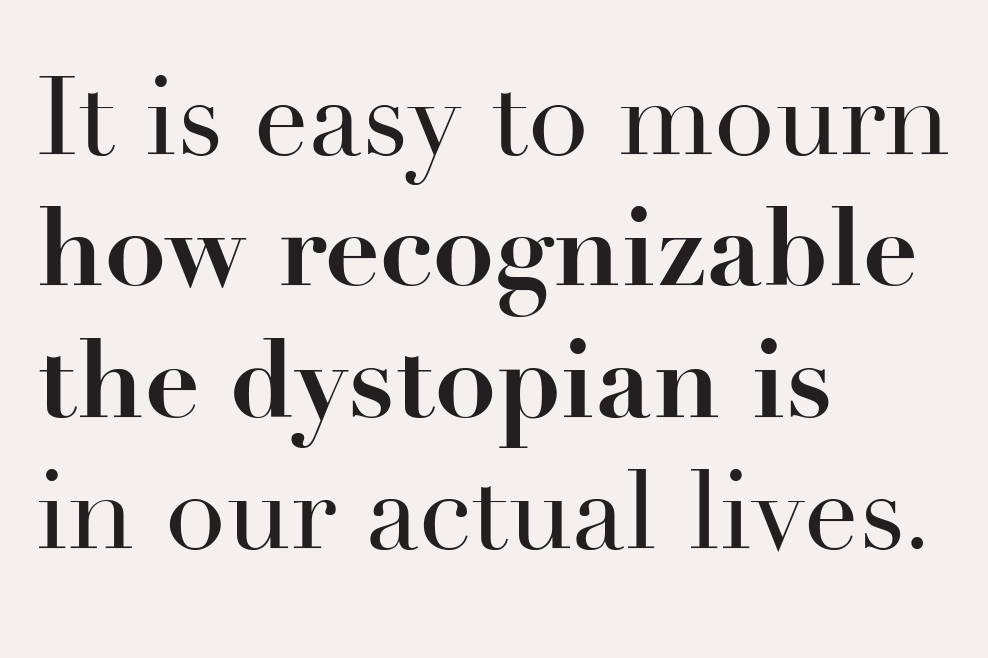
The world of dystopia is not a kind one, and we soft human animals are only capable of existing within it through protective technological mediation. It is easy to mourn how recognizable the dystopian is in our actual lives. But dystopian textile figuration does offer one key thing that the utopian does not: the right to repair. The seamlessness of utopia presupposes textiles and clothing that are self-healing or incapable of wounding (or at least appear to be so). Dystopia embraces the fully tactile, breakdowns, and tinkering. Disjuncture is the norm, and so too then constant adjustment, failure, and readjustment. In Dystopia, everything is broken; in Utopia, there is nothing left to fix.
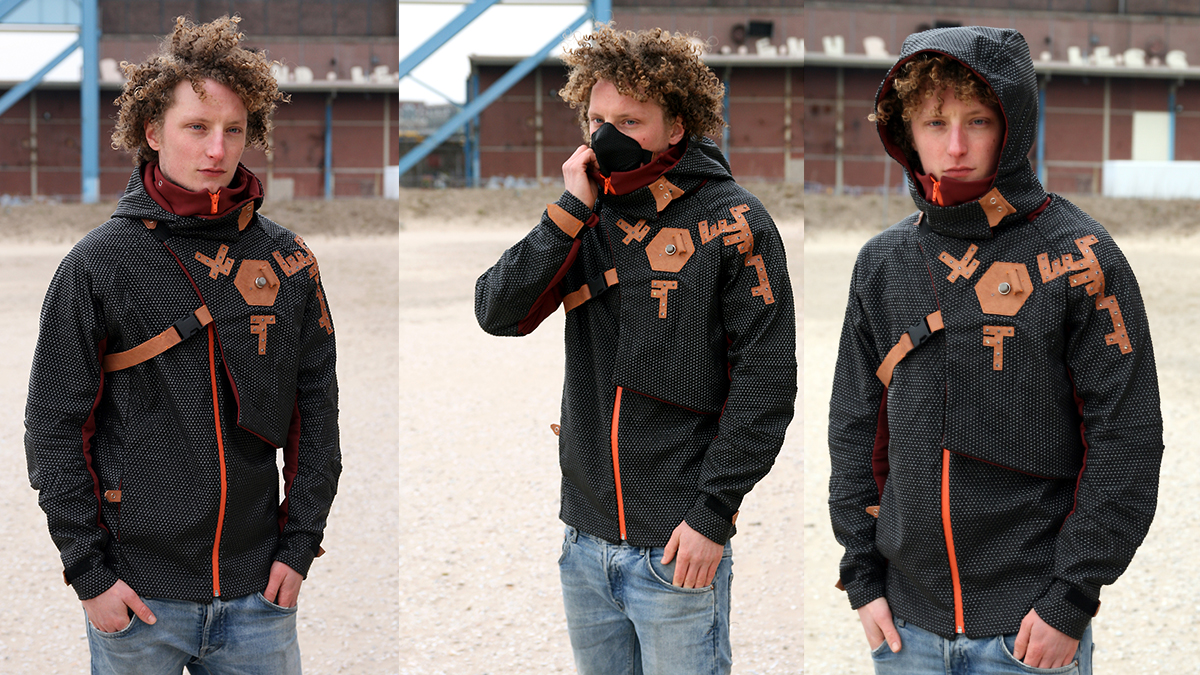
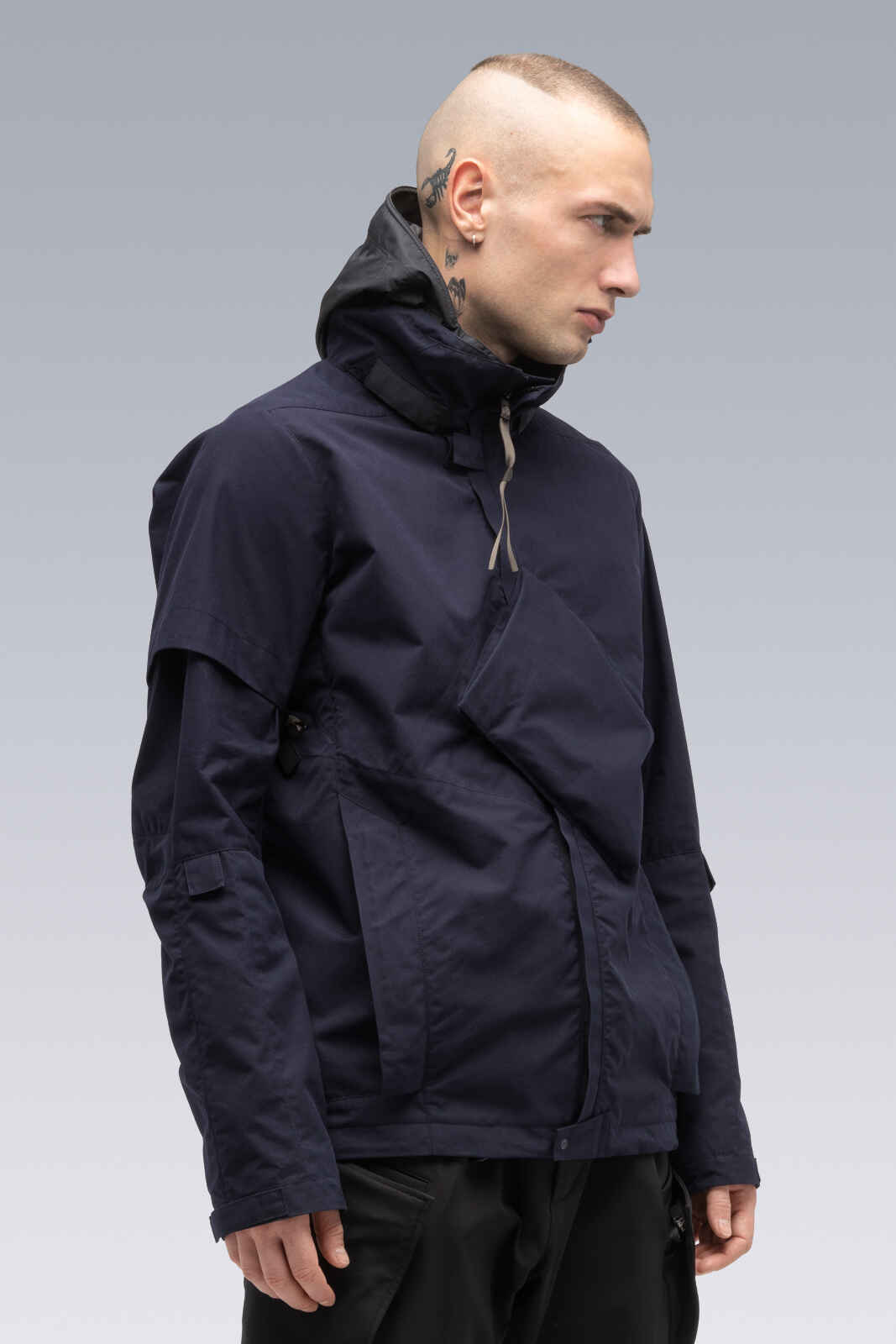
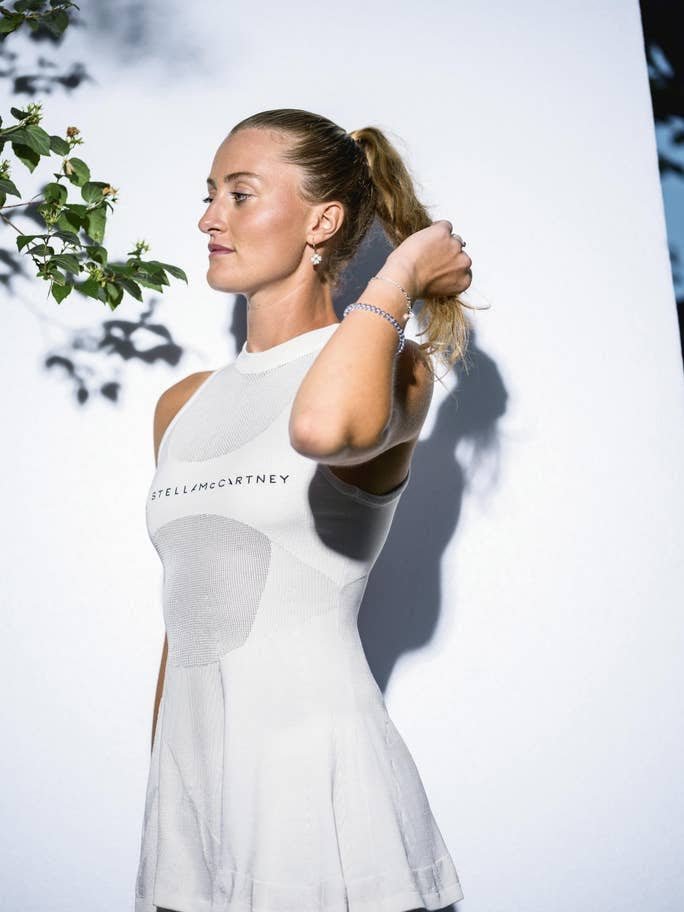

The Aegis Pollution-Sensing Parka from design duo Nieuwe Heren, 2012. From their website: “With Urban pollution growing out of hand, and lifespans diminishing due to airborne pollutants we felt the urge to design a jacket that counters those effects.”
The J36-S aka Stotz® EtaProof™ Interops Jacket from German fashion brand ACRONYM. From the item description: “The slanted flak pocket aligns perfectly with 3A INTEROPS bag straps and allows for quick right-handed access. The pocket also hides the mount for a Fidlock® magnetic dock point...The 3D collar ridge stabilizes the collar even when the jacket is worn open...ideal for use at speed.”
The Adidas Stella McCartney Biofabric Tennis Dress, a bioengineered prototype garment developed with Bolt Threads. According to Adidas, it is “made with cellulose blended yarn and Microsilk™, a protein-based material that is made with renewable ingredients, like water, sugar, and yeast and has the ability to fully biodegrade at the end of its life.’”
Imperial Motion’s Nano Cure Tech “self-healing nylon,” designed to repair small holes and tears with the application of body heat.
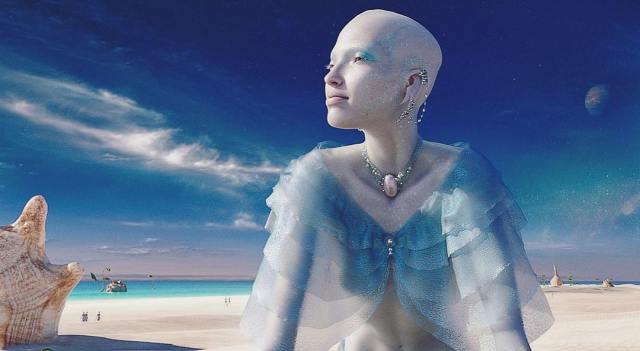 The low-tech and utopian Mül aliens, still from Valerian and the City of a Thousand Planets (2017)
The low-tech and utopian Mül aliens, still from Valerian and the City of a Thousand Planets (2017)